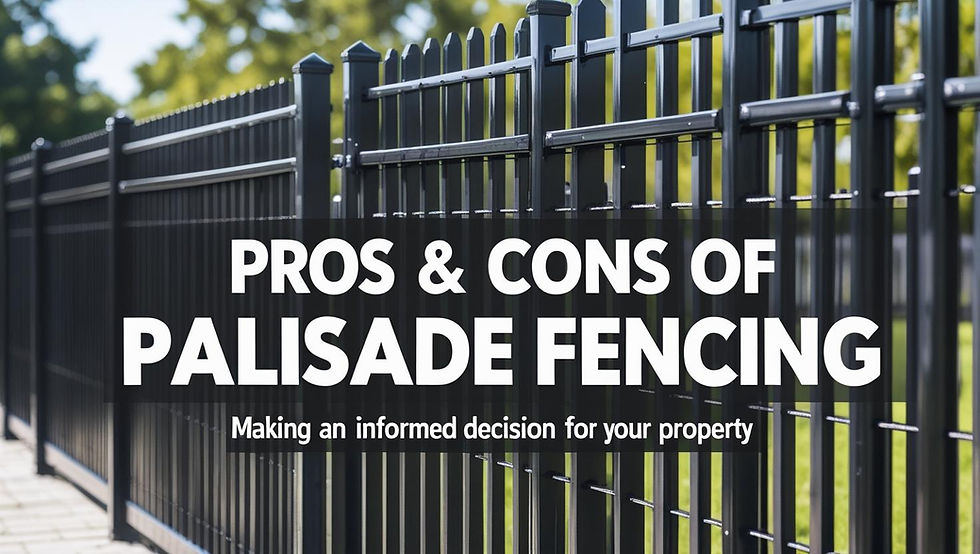The Role of Bastion Barriers in Modern Perimeter Security Design
- bangjunfencetech
- Jul 24
- 4 min read

In today’s rapidly evolving security landscape, both military and civilian sectors require perimeter defense systems that are not only durable but also modular, cost-effective, and fast to deploy. One such innovation that has dramatically reshaped perimeter security strategies worldwide is the bastion barrier.
Often referred to as Defensive Bastion Barriers, these modular gabion-like structures made from steel wire mesh and lined with heavy-duty geotextile fabric are now essential in safeguarding military bases, border zones, airports, flood-prone regions, and critical infrastructure facilities.
Let’s explore why bastion barriers are at the forefront of modern perimeter security design and how they outperform traditional methods in strength, speed, and adaptability.
What Are Bastion Barriers?
Bastion barriers are prefabricated defensive structures consisting of collapsible wire mesh containers with geotextile fabric lining. Once expanded and filled with sand, gravel, or earth, they form a solid barrier capable of withstanding blasts, bullets, and environmental threats like floods.
Originally developed for military use, these barriers are now widely used in civilian applications where fast-deployable perimeter security is crucial.
Why Modern Security Needs Bastion Barriers
With increasing threats ranging from terrorism to natural disasters, perimeter security must go beyond simple fencing. Traditional methods like concrete walls or sandbags often fall short in terms of deployment speed, scalability, and mobility.
Bastion barriers address these challenges with:
Rapid deployment: One team can deploy hundreds of meters in a single day.
Modular design: Barriers can be linked, stacked, or customized to fit any layout.
Ballistic and blast resistance: Provides superior protection against high-velocity impacts and explosions.
Dual-purpose use: Acts as flood defense as well as combat protection.
Applications of Bastion Barriers in Perimeter Design
Bastion barriers are now core elements in the perimeter design of:
Military Bases
Perimeters are often reinforced with layered bastion walls, offering both visual and tactical protection from RPGs, small arms fire, and vehicle-borne IEDs. For military grade protection, check out BangJun Fence, as they provide secure and compact fences.
Border and Anti-Intrusion Zones
Their height and density make them ideal for deterring intrusions and illegal crossings, especially in remote or rugged terrains.
Airports and Embassies
These structures act as both visible deterrents and physical barriers, especially around critical control points and secure zones.
Oil Fields and Power Plants
High-risk infrastructure sites use bastion systems to create secure boundaries that resist forced entry, sabotage, or environmental damage.
Flood Control Zones
Filled with sand or soil, these barriers are highly effective in redirecting water flow and protecting communities from storm surges and river overflows.
Design Benefits: Why Engineers Prefer Bastion Barriers
1. Customizable Configurations
Design teams can stack multiple units for additional height or create L-shaped corners and enclosures without needing heavy equipment.
2. Fast, Scalable Deployment
Flat-packed and easy to transport, bastion barriers can be rapidly expanded on-site, even in challenging environments.
3. Long-Term Durability
Galvanized steel and UV-resistant geotextile ensure these barriers withstand extreme weather and repeated use.
4. Minimal Maintenance
Once deployed, the fill material and construction require minimal ongoing support compared to fences or sandbags.
Integration with Modern Surveillance and Access Control
Bastion barriers aren’t just passive defenses. They are increasingly integrated with:
CCTV cameras
Motion sensors
Drone surveillance platforms
Access control points
This combination forms a layered security ecosystem that deters, detects, and delays any breach attempt, aligning with best practices in perimeter security planning.
Environmental Considerations
Unlike concrete or permanent walls, bastion barriers offer low-impact, reversible installation, making them ideal for temporary use in ecologically sensitive or urban zones.
Moreover, once dismantled, their components can be reused or recycled, promoting a sustainable approach to defense infrastructure.
Case Study: Bastion Barriers in Civil Emergency Response
During flood emergencies in Southeast Asia and the Middle East, bastion barriers have been successfully deployed to:
Create temporary floodwalls
Stabilize riverbanks
Shield critical infrastructure (e.g., power substations, hospitals) from water ingress
Their speed and scalability proved far more effective than deploying thousands of sandbags in a short window.
Final Thoughts
The role of bastion barriers in modern perimeter security goes beyond military defense. These versatile, scalable, and high-performance barriers are now cornerstones of physical protection strategies for governments, critical industries, and disaster response agencies.
For organizations seeking a reliable, field-proven solution for perimeter threats, be it ballistic, environmental, or vehicular, Defensive Bastion Barriers from Bangjun Fence offer the durability and flexibility required in today’s security environments.
FAQs
Are bastion barriers reusable?
Yes, with proper dismantling and storage, both the mesh and geotextile liners can be reused multiple times.
What kind of fill material is used in bastion barriers?
Typically, sand, gravel, earth, or crushed stone is used depending on availability and application.
How tall can bastion barriers be stacked?
Units can be stacked 2–4 layers high, depending on design requirements and fill support.
Can bastion barriers withstand explosions?
Yes, they are designed to absorb and deflect blast waves from explosives, making them ideal for military and high-threat installations.
Do bastion barriers require foundations?
No permanent foundations are needed, which simplifies and speeds up installation significantly.
How fast can a team deploy bastion barriers?
With trained personnel, several hundred meters can be installed in a single day, even in remote environments.




Comentários